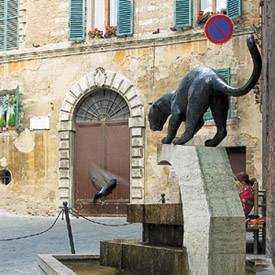Capturing the Elusive Shot
|
|
| It's one thing to be able to check the preview and discern whether you've got the shot, but it's quite another to have time left to do something about it. Many shots present themselves for just a brief moment before they disappear forever. As a result, anticipating when a shot will appear and being ready for it is a very important skill to cultivate. Bracket in Uncertain LightBracketing is a great safety net you can use to make sure that you've exposed the image properly. It's a process where the camera captures the primary exposure along with an image that's slightly lighter and one that's slightly darker, with intervals that are determined in your camera's setup menu. You can createthe variation in exposure by adjusting f-stops or shutter speeds, although f-stop variation is the most common approach to bracketing. If you're shooting candid, dynamic subject matter in uncertain lighting conditions, bracketing your exposures casts a wide net to give you the best chance of success. Burst Exposure for Fast ActionIf you're shooting a moving subject such as a sporting event or stock car race, burst exposures dramatically increase your chances of getting the right shot. The process involves shooting a series of images in rapid succession, freezing the action several times in the course of a single motion. Want to catch the baseball pitcher's arm at the apex as he's throwing his fastball? Set the camera to burst and time his motion, pressing the shutter at the appropriate time. When you review your results, choose the one image from the burst sequence that is closest to what you were after. Figures
Burst capabilities vary from camera to camera. As I write this, I'm using a Nikon D2H, which has a burst rate of 8 frames per second, with an image buffer of up to 40 frames (the buffer determines how many shots you can shoot in succession before the camera has to write the images to the card). As of this writing, the D2H is at the high end of the digital camera spectrum, but many other dSLRs sport decent burst rates that can help you pin down that elusive moment. Plan AheadOne of the simplest things you can do to capture fast action or fleeting images is to do the Boy Scout thing and be prepared. This means giving yourself time to set up and shoot a few test images, being well versed in all aspects of the equipment, and learning to anticipate exposure for different lighting conditions. It sounds like a simple or obvious suggestion, but I've seen too many people show up late for an event or fumble with settings when they should have been taking the shot. |
|
|
EAN: 2147483647
Pages: 141

